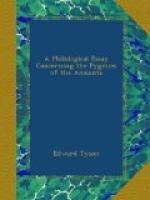1. In the first place, then, fairies are found dwelling in mounds of different kinds, or in the interior of hills. This form of habitation is so frequently met with in Scotch and Irish accounts of the fairies, that it will not be necessary for me to burden these pages with instances, especially since I shall have to allude to them in a further section in greater detail. Suffice it to say, that many instances of such an association in the former country will be found in the pages of Mr. MacRitchie’s works, whilst as to the latter, I shall content myself by quoting Sir William Wilde’s statement, that every green “rath” in that country is consecrated to the “good people.” In England there are numerous instances of a similar kind. Gervase of Tilbury in the thirteenth century mentions such a spot in Gloucestershire: “There is in the county of Gloucester a forest abounding in boars, stags, and every species of game that England produces. In a grovy lawn of this forest there is a little mount, rising in a point to the height of a man.” With this mount he associates the familiar story of the offering of refreshment to travellers by its unseen inhabitants. In Warwickshire, the mound upon which Kenilworth Castle is built was formerly a fairy habitation.[A] Ritson[B] mentions that the “fairies frequented many parts of the Bishopric of Durham.” There is a hillock or tumulus near Bishopton, and a large hill near Billingham, both of which used in former time to be “haunted by fairies.” Even Ferry-hill, a well-known stage between Darlington and Durham, is evidently a corruption of “Fairy-hill.” In Yorkshire a similar story attaches to the sepulchral barrow of Willey How,[C] and in Sussex to a green mound called the Mount in the parish of Pulborough.[D] The fairies formerly frequented Bussers Hill in St. Mary’s Isle, one of the Scilly group.[E] The Bryn-yr-Ellyllon,[F] or Fairy-hill, near Mold, may be cited as a similar instance in Wales, which must again be referred to.
[Footnote A: Testimony of Tradition, p. 142.]
[Footnote B: Op. cit., p. 56.]
[Footnote C: Folk Lore, ii. 115.]
[Footnote D: Folk Lore Record, i. 16 and 28.]
[Footnote E: Ritson, p. 62.]
[Footnote F: Dawkins, Early Man in Britain, p. 433.]
The pages of Keightley’s work contain instances of hill-inhabiting fairies in Scandinavia, Denmark, the Isle of Rugen, Iceland, Germany, and Switzerland. It is not only in Europe, however, that this form of habitation is to be met with; we find it also in America. The Sioux have a curious superstition respecting a mound near the mouth of the Whitestone River, which they call the Mountain of Little People or Little Spirits; they believe that it is the abode of little devils in the human form, of about eighteen inches high and with remarkably large heads; they are armed with sharp arrows, in the use of which they are very skilful. These little spirits are always on the watch to kill those who should have the hardihood to approach their residence. The tradition is that many have suffered from their malice, and that, among others, three Maha Indians fell a sacrifice to them a few years since. This has inspired all the neighbouring nations, Sioux, Mahas, and Ottoes, with such terror, that no consideration could tempt them to visit the hill.[A]




